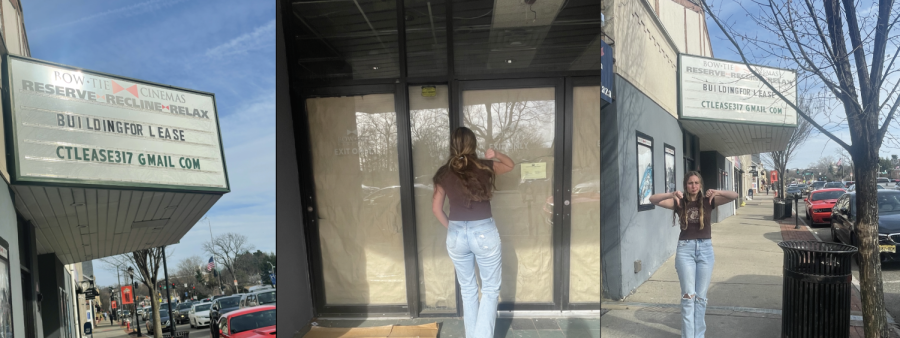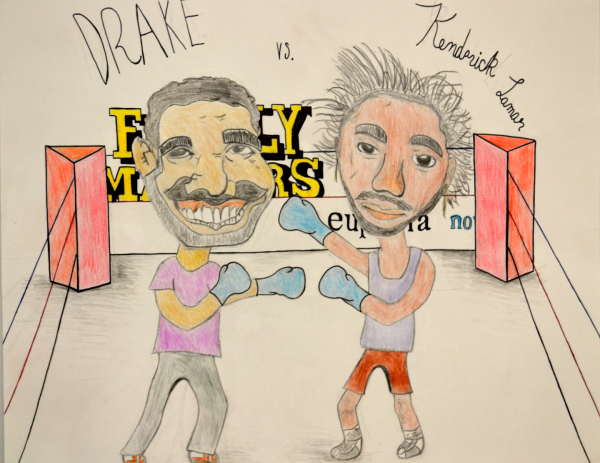Sit back, relax but watch out for movie theaters’ downfall
Staff photo by Lindsey Leitner
People are more compelled to watch films on streaming services than enjoy the movie theater experience. Editor-in-chief Rachel Levine mourns the closure of Bowtie Cinemas in Caldwell.
Lights, camera, action—actually, without the action. The core memory of being a doe-eyed child, mesmerized by the magic of the big screen, was stripped away from the current generation of adolescents due to the demise of the movie theater as attraction. Now that people have the option to conveniently stream upcoming movies in the comfort of their own home, fewer young people are sharing laughs over handfuls of popcorn.
An evident opponent that stood in the way between kids and this enjoyable opportunity for social interaction among their peers was COVID-19. During the seemingly endless isolation period, individuals were left to their own devices when it came to entertainment. Everyone turned to technology to keep themselves occupied—which in most cases was online streaming services such as Hulu and Netflix. According to a New York Times article from September 2022, approximately 500 movie screens were forced to close down since the start of the pandemic.
Going into the summer of 2022, there was a glimmer of hope for the skyrocket of business for cinematic companies. Films such as “Top Gun: Maverick” and “Minions: The Rise of Gru” were must-sees. Younger generations got a taste of the movie theater magic, while older ones had the opportunity to tap back into the irreplaceable experience they have longed for in the last two years. However, this potential turning point was short-lived, and pretty soon, streaming services were back to being the primary destination for movie-viewing.
As thrilling as the recliner chairs and unlimited refills are, many individuals are still choosing the at-home route. According to the brand-consulting company Kantar, 85 percent of U.S. households have a subscription for at least one video streaming service. Of course, it is understandable that people are going to yearn to get their money’s worth and utilize their investment as much as possible. Unfortunately for movie theater enterprises, this means less people are getting in line, eager to purchase tickets.
This lingering issue certainly has a long-lasting impact on the movie industry, but also on future generations to come. If individuals are growing up in a streaming service household, those patterns of movie-watching behavior are going to repeat themselves as their children grow into adults themselves. Even though this can be perceived as a blip, this situation may be more than just a bump in the road for these companies and for the expansion of online viewing platforms that continue to be on the rise.
As doe-eyed children become infatuated with the ability to continuously view their favorite films at their fingertips, ending credits are rolling for the movie theater industry—potentially for good.











